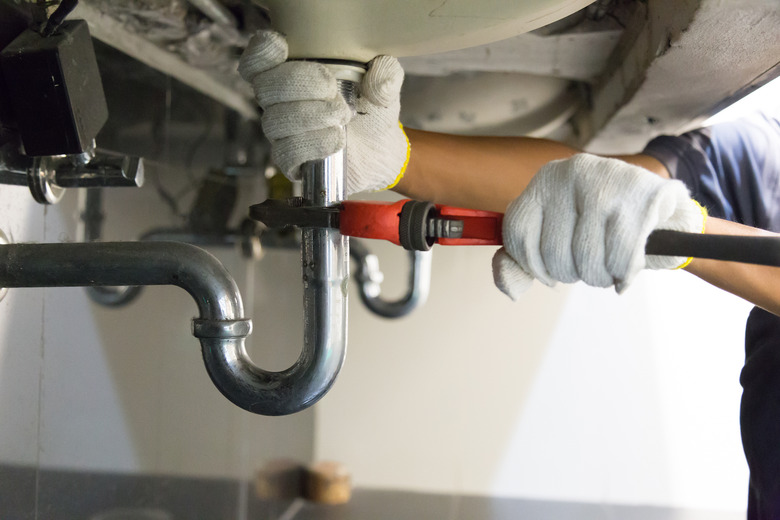How To Remove Plumber's Putty
Plumbers use plumber's putty primarily to seal drain assemblies to sinks. They may also use it to waterproof a faucet base, although it isn't really necessary for that, because faucets generally don't leak from the base. You'll have occasion to come in contact with dried and hardened plumber's putty when you disassemble a sink drain or replace a garbage disposal. Fortunately, removing it is easy.
Using Plumber's Putty
Using Plumber's Putty
Plumber's putty starts out soft and pliable when you remove it from the container, and it takes a long time to dry and harden. When installing a drain or garbage disposal, you can use plumber's putty for cast iron, porcelain and plastic sinks. You can even use plumber's putty for a stainless steel sink.
Dried and hardened plumber's putty tends to chip away on its own, and what doesn't come off effortlessly is easy to scrape off with a putty knife. When a residue is left behind, you can remove it with mineral spirits, because the binder in plumber's putty is linseed oil, which dissolves readily in that fairly mild solvent.
Read more: How to Use Plumbers Putty for Garbage Disposal Repair
What's In Plumber's Putty?
What's In Plumber's Putty?
Although there are a number of proprietary blends of plumber's putty on the market, traditional blends consist mostly of clay mixed with linseed oil, with perhaps a little fish oil thrown in for good measure. Most products also contain limestone. Oatey® Plumber's Putty, which is one of the leading brands, consists of 60 to 80 percent limestone, and although the material Safety Data Sheet doesn't mention linseed oil, it does keep certain ingredients that are present in low concentrations secret, and linseed oil is probably one of them.
Because linseed oil can stain porous surfaces, you shouldn't use plumber's putty for granite sinks nor for marble ones. For these, a water-based silicone sealer is a better choice for anchoring the faucet and sealing the drain. When choosing between plumber's putty or silicone, keep in mind that silicone is a better adhesive, and it's harder to remove.
Read more: What Can Be Used to Dissolve Silicone Caulking?
Removing Oatey Plumber's Putty
Removing Oatey Plumber's Putty
Plumber's putty forms a watertight seal, but it isn't an adhesive, so it won't make it any harder to remove a drain or faucet to which it has been applied. Once you put pressure on the joint, old plumber's putty usually breaks apart readily, and you should be able to remove the bulk of it with your fingers. To get the rest off, a little light scraping with a putty knife is all it usually takes, but there may be a thin film of dried linseed oil left over.
Depending on the sink material, you can also remove most of the residue by scraping. What you can't scrape off you can usually wash off with soap and water, but if there is any residue that won't come off this way, wet a rag with mineral spirits or paint thinner and wipe vigorously. Use the same technique to remove dried putty from the drain flange or faucet you just uninstalled.
Plumber's Putty or Silicone?
Plumber's Putty or Silicone?
Because it's watertight and doesn't create a permanent bond, plumbers generally choose plumber's putty over silicone for installing sink drains. However, sometimes an adhesive such as silicone is needed to ensure a permanent bond, such as in an outdoor plumbing fixture or a utility drain. Moreover, silicone sealant is needed when installing drains on porous stone sinks.
Keep in mind that plumber's putty is not the same thing as pipe thread compound and shouldn't be used to seal threaded fittings. It's waterproof, but it doesn't have any strength, and it won't seal an active leak. Few sealants will; you usually need to install or replace a fitting to stop a leak.
